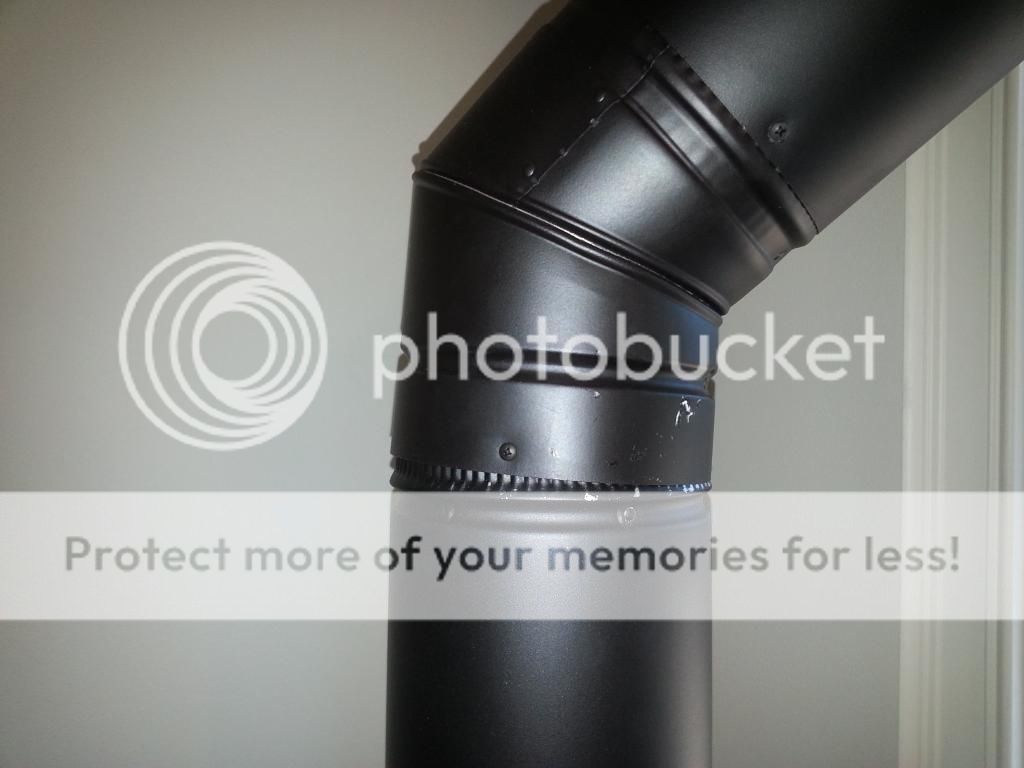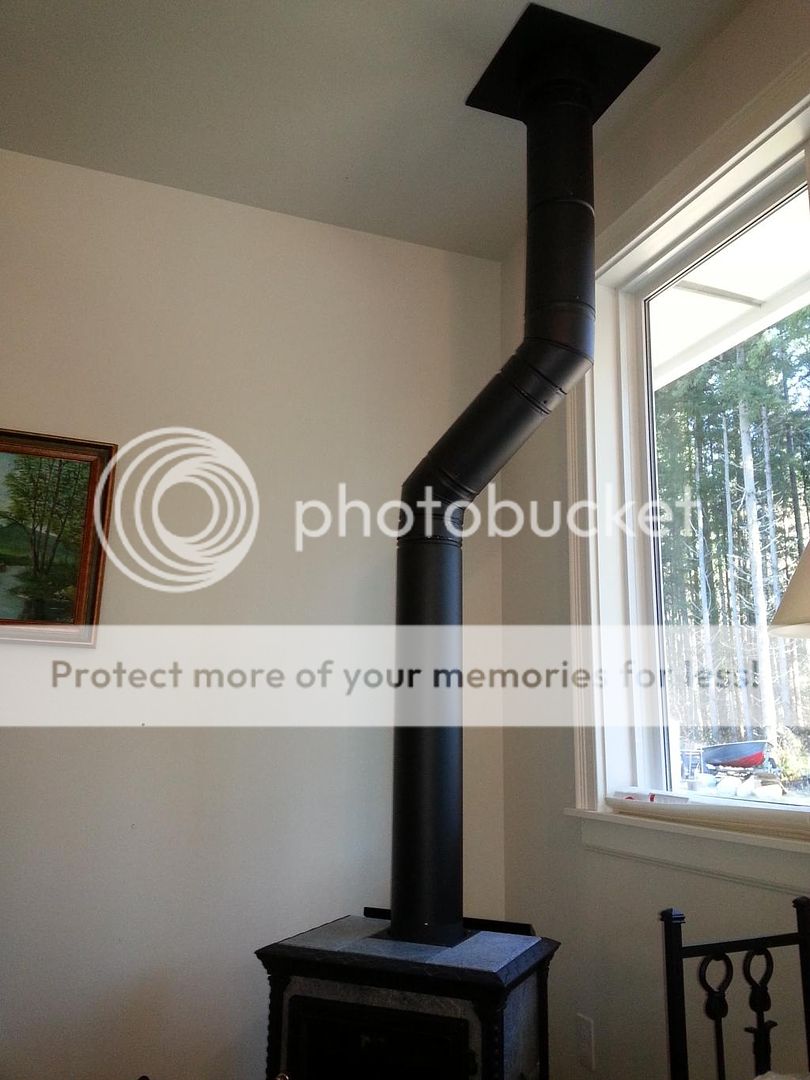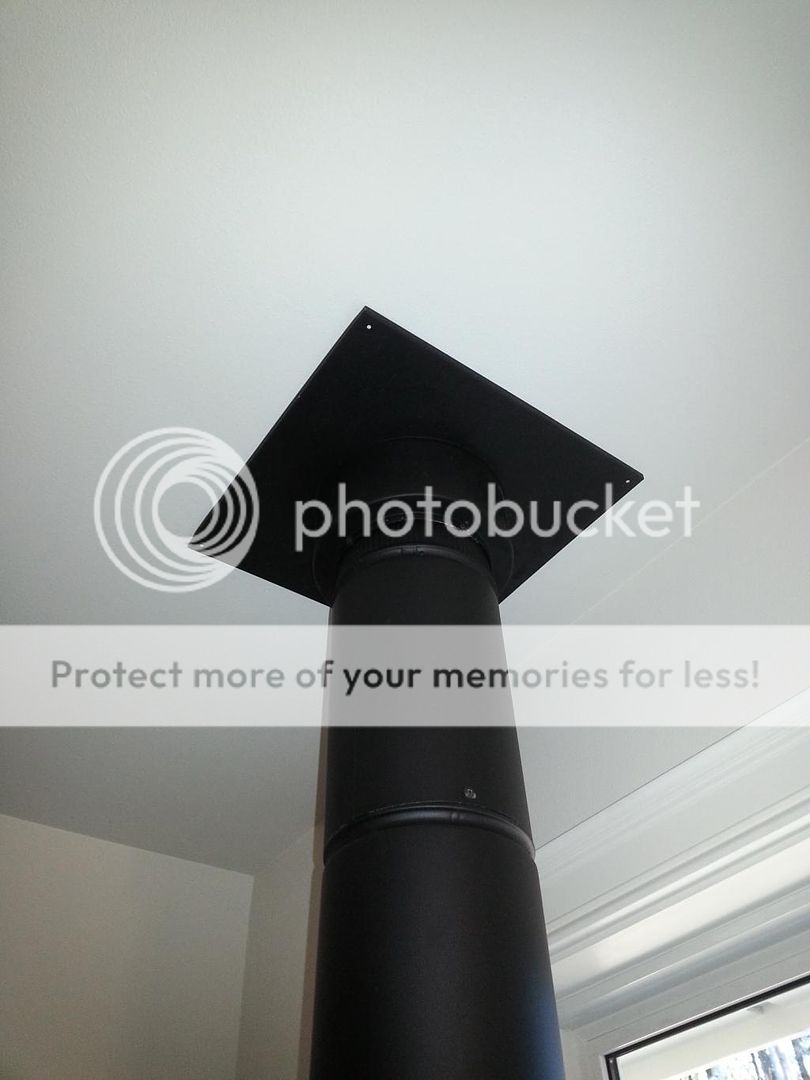Our home in NW Washington was just completed. I'm having occasional weak draw and have noticed smoke exiting a joint in our double-walled connector pipe between stove and ceiling. Only noticed this for a few seconds on two occasions after 15 hours of stove use. Stove pipe above roof has height/location to code. Air return for the furnace is at least 25 feet away from the stove. Stove has external air source pipe.
Our kids and grandkids live in one wing (2600 sq ft) with my wife and I ( grandparents ) in an attached apartment (1200 sq ft ) , separated by an exercise room. There is a central geo furnace with air returns in both wings but thermostat only in the main wing. Doors between wings are kept closed.
We had a new HearthStone Tribute wood stove installed in our wing. I'm trying to figure out how to set things so we don't have any smoke drawn into our living room. The heating company installed a "damper" switch which if used would prevent furnace air from entering our wing, but not block the air return. I'm reluctant to use that ( or block the air return ) for fear of damaging the central furnace. Its not clear to me how blocking furnace flow into our wing would improve stove draw.
http://www.hearthstonestoves.com/store/wood-products/wood-stoves/tribute-soapstone
I'm considering some high-temp stove cement on the leaking joints, but realize good draw is the real solution.
I don't understand how double-walled pipe ( air gap between pipe and liner ) can leak that way anyway.
One thing we've learned is to crack a window if turning on the kitchen stove vent fan or bathroom fan. This is a tight house and the external air source on the wood stove can't keep up with furnace draw plus vent fan draw.
Our kids and grandkids live in one wing (2600 sq ft) with my wife and I ( grandparents ) in an attached apartment (1200 sq ft ) , separated by an exercise room. There is a central geo furnace with air returns in both wings but thermostat only in the main wing. Doors between wings are kept closed.
We had a new HearthStone Tribute wood stove installed in our wing. I'm trying to figure out how to set things so we don't have any smoke drawn into our living room. The heating company installed a "damper" switch which if used would prevent furnace air from entering our wing, but not block the air return. I'm reluctant to use that ( or block the air return ) for fear of damaging the central furnace. Its not clear to me how blocking furnace flow into our wing would improve stove draw.
http://www.hearthstonestoves.com/store/wood-products/wood-stoves/tribute-soapstone
I'm considering some high-temp stove cement on the leaking joints, but realize good draw is the real solution.
I don't understand how double-walled pipe ( air gap between pipe and liner ) can leak that way anyway.
One thing we've learned is to crack a window if turning on the kitchen stove vent fan or bathroom fan. This is a tight house and the external air source on the wood stove can't keep up with furnace draw plus vent fan draw.






 But it is progress.
But it is progress.